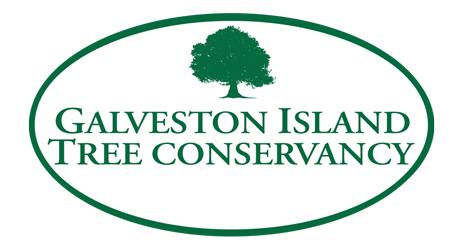
Reasons to Plant a Tree
The decision to plant a certain tree in a certain place often is an intuitive combination of aesthetic preference and site constraints. The outcome—the net benefits generated over time, both to the individual and to society—is derived in equal parts from the initial planting design, the care the tree receives over its life and time.
Trees are a unique “technology” because they produce many benefits at the same time. The primary reason for planting doesn’t limit the overall benefit to society.
Economic
Real Estate Value
Real estate professionals recognize the “curb appeal” created by well-placed trees during the sale of a home.
Some studies estimate the impact of shade trees to between 10% and 23% of the price home buyers are willing to pay.
The Houston’s Regional Forest report calculated the total landscape replacement value of trees in the eight-county region at $205 billion.
Tourism
Every year, Galveston welcomes tens of thousands of tourists who together generate millions of dollars in economic activity.
Tree planting in historic neighborhoods, the Strand District and other tourist destinations will create attractive and shady places that will continue to add to the economic vitality of this historic city.
Business
Retail shopping districts can benefit from strategic placement of trees. Research by Dr. Kathleen Wolf at the University of Washington (www.naturewithin.info) has demonstrated the impact of trees on shopper attitudes, preferences and spending habits.
Surveyed shoppers said they would be willing to spend up to 12% more for goods and services in an area with a well-tended urban forest.
Environmental
Water Quantity & Quality
Studies have shown that tree canopies intercept rainfall and lower the demand on storm water systems in cities, especially those with limited capacity. Newer research has shown that tree roots and surrounding green space can lower pollutant levels in surface runoff.
Air Quality
In 2005, TFS published a study for the eight-county Houston area (www.houstonregionalforest.org) estimating that trees in the region removed more than 60,000 tons of criteria air pollutants (as designated by the Clean Air Act), a process valued at almost $300 million annually.
Energy Efficiency
With global attention on energy systems, any method that lowers energy consumption and reduces power plant emissions is considered “low hanging fruit.”
Strategic tree planting to shade windows, walls and rooftops has demonstrated direct savings for homeowners and indirect savings to the utility industry by reducing peak demand and the need for new power plants (see www.sactree.com).
Urban Heat Islands
Cities are built using materials that absorb and reflect heat from the sun, causing urban temperatures to be higher than suburban or natural areas nearby.
Trees in cities can reduce ambient air temperatures through the process of transpiration, during which water from leaf surfaces evaporates and cools the air.
Climate Change
Texas is a hot place in the summer and, if the Intergovernmental Panel on Climate Change (IPCC) is correct, it may get even hotter over the next half-century.
Efforts to reduce carbon emissions will have long-term benefits, but in the short run, tree planting offers one of the best methods available to take carbon out of the atmosphere.
Wildlife Habitat
Galveston is a Gulf Coast barrier island that provides migrating songbirds their first chance to rest following their long flights from Central and South America each spring. Tree canopies are important feeding stations that allow many species to recuperate before continuing their journey to nesting areas farther north.
Locally, trees and natural areas are permanent homes to a wide variety of wildlife species.
Social
Wellness
Recent studies show that patients with access to nature and gardens have speedier recoveries, and health care providers with the same access have reduced stress levels (summarized in Ulrich, 1999).
In addition, outdoor recreation activities—and their attendant health benefits—are more likely to take place in areas with tree canopy.
Galveston city parks, school playgrounds, streets and the UTMB campus offer excellent opportunities to use tree planting to achieve such health benefits.
Human Comfort
Shade may be the most intuitive—and tangible—benefit that people identify with trees. We select park benches, walk on one side of the street over the other and park our cars based on the available shade produced by trees.
Streetscapes without trees make summertime pedestrian travel exceedingly uncomfortable; park playscapes without shade can even be dangerous for children.
Sense of Place
Galveston residents fully appreciate what trees mean to their community.
Hurricane Ike’s impact on tree cover in Galveston has altered the relationship between residents and trees, such that trees are no longer taken for granted.
Planting trees is seen as a new civic duty that links citizens of today with the residents who survived the Great Storm of 1900 and rebuilt Galveston.
